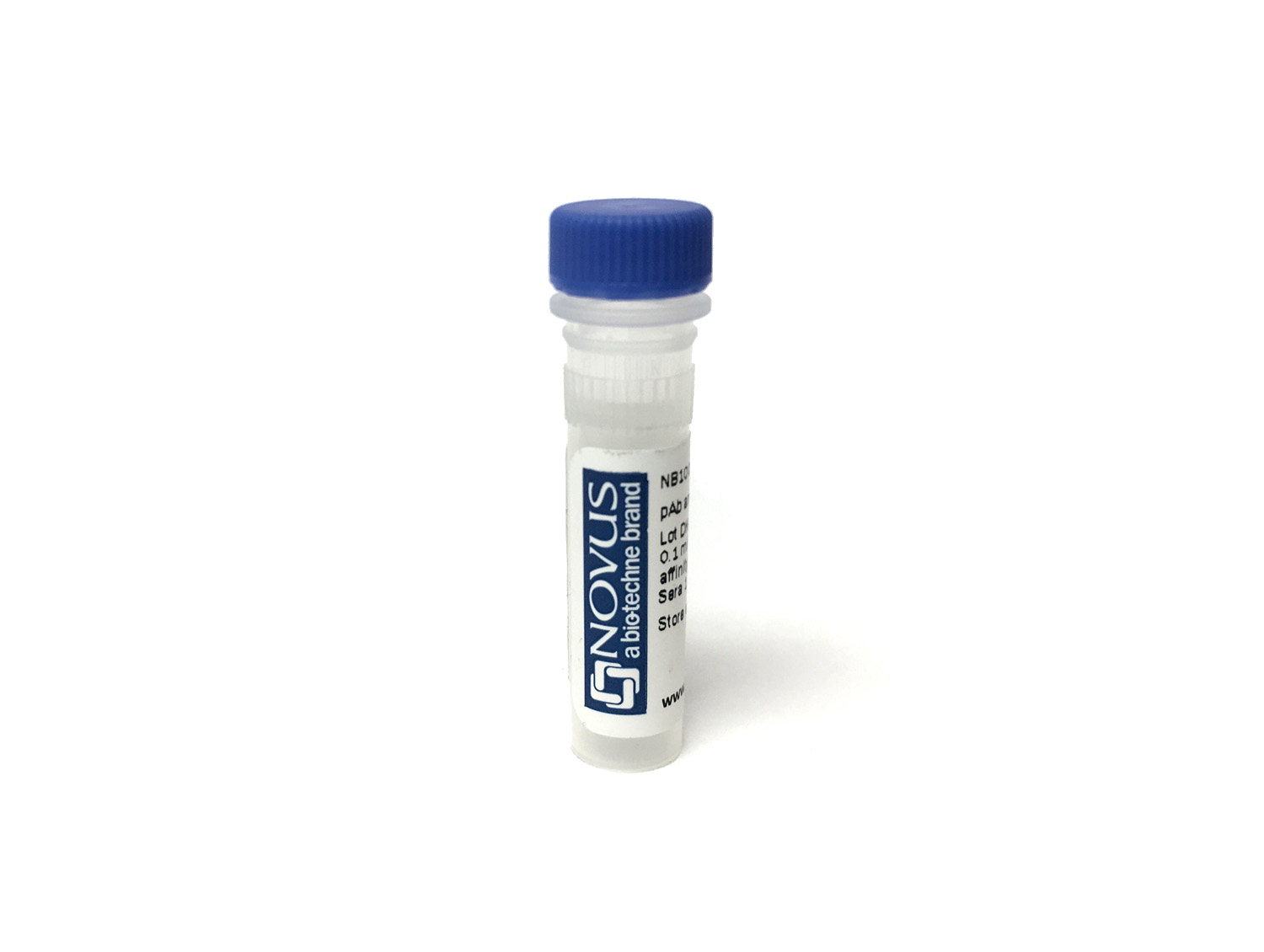Tryptase beta-2/TPSB2 Antibody (03) [DyLight 594]
Novus Biologicals, part of Bio-Techne | Catalog # NBP3-06181DL594


Conjugate
Catalog #
Forumulation
Catalog #
Key Product Details
Species Reactivity
Human
Applications
ELISA
Label
DyLight 594 (Excitation = 593 nm, Emission = 618 nm)
Antibody Source
Monoclonal Mouse IgG1 Clone # 03
Concentration
Please see the vial label for concentration. If unlisted please contact technical services.
Product Specifications
Immunogen
This antibody was produced from a hybridoma resulting from the fusion of a mouse myeloma with B cells obtained from a mouse immunized with purified, recombinant Human Tryptase beta-2/TPSB2 (Accession#: NP_077078.5; Met 1-Pro 275).
Reactivity Notes
No cross-reactivity in ELISA with:
Human cell lysate (293 cell line)
Human cell lysate (293 cell line)
Specificity
No cross-reactivity in ELISA with: Human cell lysate (293 cell line)
Clonality
Monoclonal
Host
Mouse
Isotype
IgG1
Applications for Tryptase beta-2/TPSB2 Antibody (03) [DyLight 594]
Application
Recommended Usage
ELISA
Optimal dilutions of this antibody should be experimentally determined.
Application Notes
Optimal dilution of this antibody should be experimentally determined.
Formulation, Preparation, and Storage
Purification
Protein A purified
Formulation
50mM Sodium Borate
Preservative
0.05% Sodium Azide
Concentration
Please see the vial label for concentration. If unlisted please contact technical services.
Shipping
The product is shipped with polar packs. Upon receipt, store it immediately at the temperature recommended below.
Stability & Storage
Store at 4C in the dark.
Background: Tryptase beta-2/TPSB2
Alternate Names
EC 3.4.21, EC 3.4.21.59, mast cell tryptase beta II, mast cell tryptase beta III, TPS2, TPS2tryptase beta-2, TPSB2, tryptase beta 2, tryptase beta 2 (gene/pseudogene), tryptase beta II, tryptase beta III, Tryptase beta2, Tryptase beta-2, Tryptase II, tryptase III, Tryptase-2, tryptaseB, tryptaseC, Tryptase-C
Gene Symbol
TPSB2
Additional Tryptase beta-2/TPSB2 Products
Product Documents for Tryptase beta-2/TPSB2 Antibody (03) [DyLight 594]
Product Specific Notices for Tryptase beta-2/TPSB2 Antibody (03) [DyLight 594]
DyLight (R) is a trademark of Thermo Fisher Scientific Inc. and its subsidiaries.
This product is for research use only and is not approved for use in humans or in clinical diagnosis. Primary Antibodies are guaranteed for 1 year from date of receipt.
